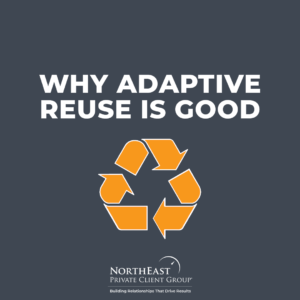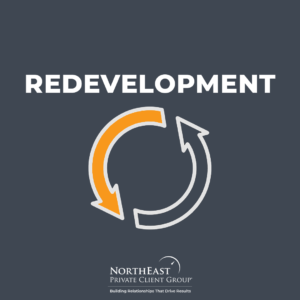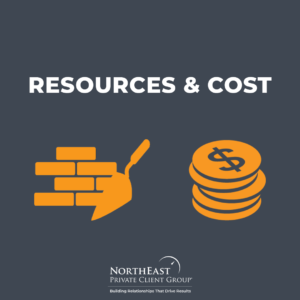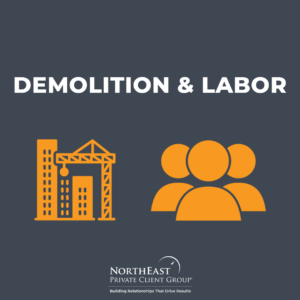Industry and technology in the United States are bound to change over time. That is a sign the country is growing and progressing. Sometimes it seems as though real estate and infrastructure struggle to match the rapid pace of this change. In every American city, you’ll find buildings that are relics of the past.
These can range from mill buildings to churches to factories and more. Some of these buildings still serve their original purpose. Modern development and forgotten trades resulted in some buildings getting left behind.
Why is Adaptive Reuse of Industrial Buildings Important?

Due to changing needs, different regions of the country emerge as hubs of commerce.
Companies will often move around to find areas that best suit their needs. These needs are subject to change as markets come and go. They are also fluid based on the state of the economy.
In the past two years alone, the nation and the rest of the world have seen abrupt and lasting change across nearly every industry. The onset of a global pandemic completely shifted the market and the working landscape. Millions of workers became remote and performed their jobs at home. Millions more changed how they shopped, ate, and entertained themselves.
This change greatly affected real estate as some building types experienced increased vacancies while others were in high demand. Most cities saw some variation in occupancy rates. In many cities, large office buildings remained empty, while titans of distribution and technology made vast purchases to meet the demands of the changing landscape.
As this unfolded, the trend of overseas manufacturing continued, leaving behind swathes of abandoned industrial areas. Redevelopment, or adaptive reuse of industrial buildings, allows developers the flexibility to transition outdated properties into efficient and productive mixed-use investments that are better suited to the areas where they stand.
After the updates are complete, these buildings tend to perform much better with their occupancy rates, providing you, as the investor, with higher returns and the satisfaction of contributing to the local economy in a more meaningful way.
Defining Redevelopment

Redevelopment is all about making an existing structure attract the modern consumer or appealing to an intermediary.
The goal of redevelopment is to reposition properties to provide a better fit for the fastest-growing industrial sectors.
With regards to industrial properties, this could mean salvaging or remodeling abandoned commercial spaces. Where there is demand, the adaptive reuse of industrial buildings is a good investment.
An article by the Cumberland Area Economic Development Corporation states that “Redevelopment has been ongoing in larger cities since the urban renewal boom of the early 1990s, when, most famously, New York City’s Meatpacking District and Lower East Side became booming hubs for art, nightlife, and commerce. It’s only in recent years that this trend has spread to smaller cities throughout the Northeast.”
Additionally, in most cases, the developer will aim to keep the outer frame of the building “Intact while renovating the interior to fit a specific purpose.”
With any luck, a redevelopment project will help generate motivation to jumpstart similar activities, “Bringing a sense of vitality and growth to a once-abandoned area.” At the heart of a good investment is confidence.
Inspiring confidence across a broader scope will make a good investment a great one. If other developers feel encouraged to latch on to redevelopment trends, tremendous returns are available and as new hubs of industry form. Take Silicon Valley or Austin, Texas, for example.
What is Adaptive Reuse Building?
Adaptive reuse is the practice of repurposing old structures for entirely new purposes. They accomplish this while preserving some of the building’s historic elements. It’s an interesting practice, and it’s also environmentally beneficial.
Adaptive reuse of industrial buildings promotes the extended life of existing structures rather than tearing them down and rebuilding them from the ground up. As a result, developers try to keep as much of the original structure as possible. This salvaging includes the outside shell of the building and the internal materials.
The repurposed structure does not have to be historically significant. Any building could be a good candidate for industrial building adaptive reuse.
What Are The Benefits of Adaptive Reuse of Industrial Buildings?
According to Think Currituck, in the United States, there are more than “300 billion square feet of buildings that are already built, with opportunities for adaptive reuse ranging from 100 or 1,000 square feet to hundreds of thousands” of square feet in useable space.
Optics and Sustainability
Assets America defines sustainability as a “Characteristic of development that doesn’t sacrifice the ability of future generations to meet their own challenges.” One of the most important measures for sustainability is carbon footprint.
One of the mantras of sustainability is “Reduce, Reuse, Recycle.”
This saying is highly relevant to Adaptative reuse in industrial buildings as it is quite literally in the name. By following the three “R’s” this effective real estate tactic will reinvest in the community economically with a low environmental impact.
Adaptive Reuse of Industrial Buildings is a rare opportunity for a handsome return and good optics. The two don’t have to be mutually exclusive with this investment strategy.
Physical Resources and Cost:

Redevelopment dramatically cuts down on building material costs for several reasons. Primarily, it uses far less of them.
By forgoing demolition, you are avoiding building the entire frame of the building from the ground up. The framing of a building is the highest material cost sunk into the process.
Additionally, the global pandemic has greatly affected the supply of construction materials. In May 2021, lumber reached an all-time high of $1,670.50 per thousand board feet. This increase is up from $435 just months earlier in July.
Although prices have come down since then, the question becomes how risky a complete reconstruction can be. Lead times for many materials these days can be several months and could severely drive up costs and slow down work.
Practicing adaptive reuse of industrial buildings takes less time and less scheduling than building from scratch. A bonus is that you do not have to put the entire building on operational pause. Some of the units may still accommodate occupancy before the end of renovations.
All of this means more time to close and bring in rental income. Therefore, the adaptive reuse of industrial buildings is a good investment. By refurbishing the existing building, you skip the uncertainty and potential headache of ordering these building materials.
Cost savings do not end here; in addition to avoiding the purchase of entirely new materials, old buildings can cut energy costs dramatically as well. “Old buildings made from stone and masonry are highly climate responsive. Without a doubt, new buildings cost much more to achieve similar efficiency.”
According to Forbes, a 2016 case study by the National Trust’s Research & Policy Lab found that new commercial development costs around $92 per square foot. By comparison, renovations cost only $37 per square foot.
Demolition and Labor:

Demolition consistently proves to be among the most challenging construction tasks. Coordinating it can be stressful and expensive. This challenge is especially true in an urban setting, where storing and hauling away large amounts of waste presents numerous logistical compilations.
Adaptive reuse of industrial buildings in cities eliminates this problem. Like material reduction, forgoing demolition also cuts project costs and lead times significantly. According to Assets America, “Demolition can run as high as 10% of a new-construction budget.”
Meaning you are already off to a 10% head start on recouping your investment.
A solid investment strategy takes more than just gross returns into account.
Adaptive reuse of industrial buildings is a good investment because the price savings translate to higher net results down the road.
Taxes and Government benefits
Not only can adaptive reuse of industrial buildings cut costs on the front end, but they may provide tax breaks as well.
Per the U.S National Park Service, you can reduce federal and state taxes when completing adaptive reuse of industrial buildings. Depending on the building, The Federal Historic Tax Incentives program offers up to 20% tax credit. This savings is no insignificant figure, mainly because these savings occur on a national and local level.
The adaptive reuse of industrial buildings offers a considerable value-add opportunity compared with traditional development. You can see dramatic cost savings through reduced materials, demolition costs, and tax incentives. They also have the added benefits of sustainability and community support. If you want to know if adaptive reuse could be the right choice for your building, reach out to our team to discuss your specific property

